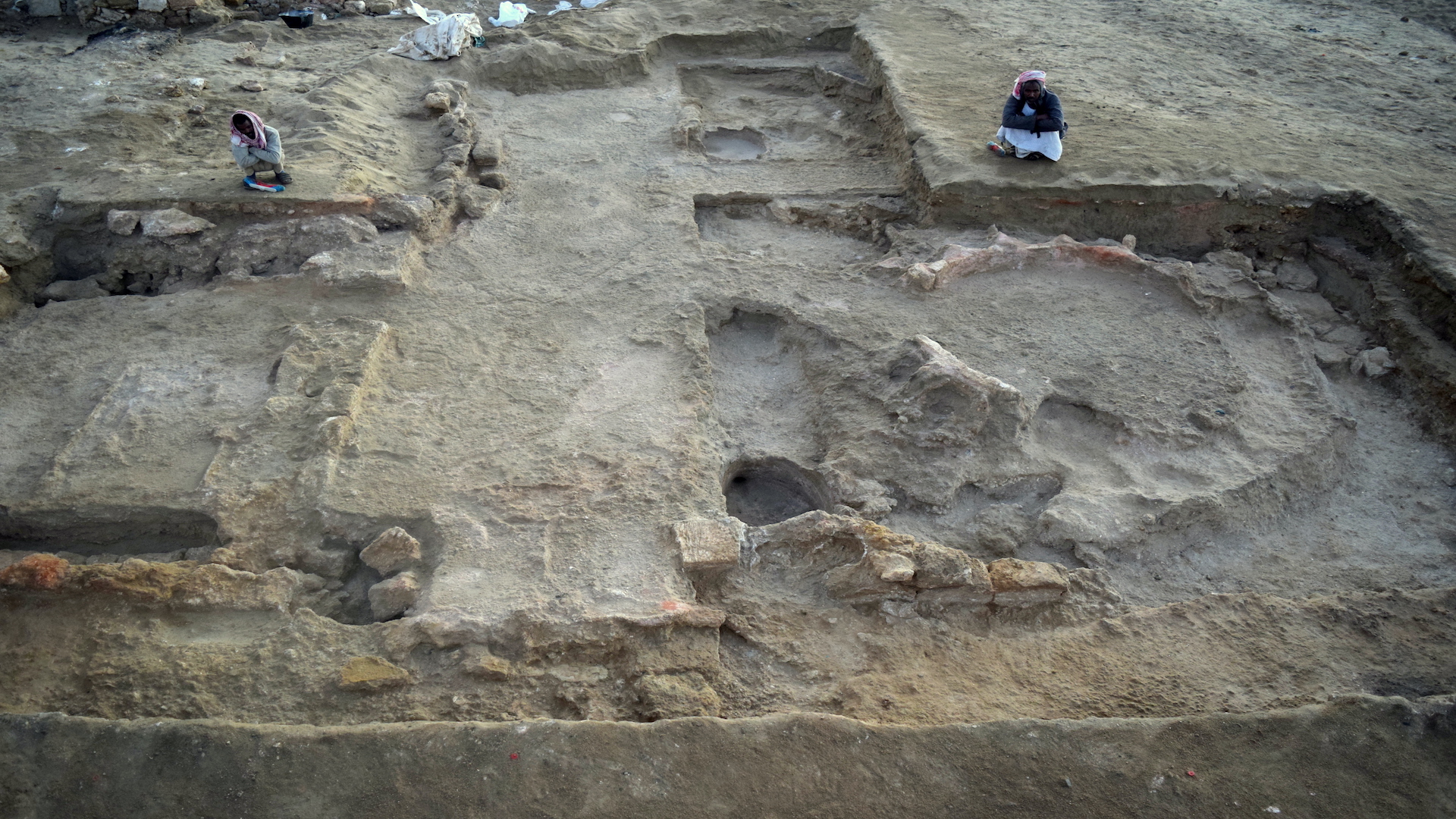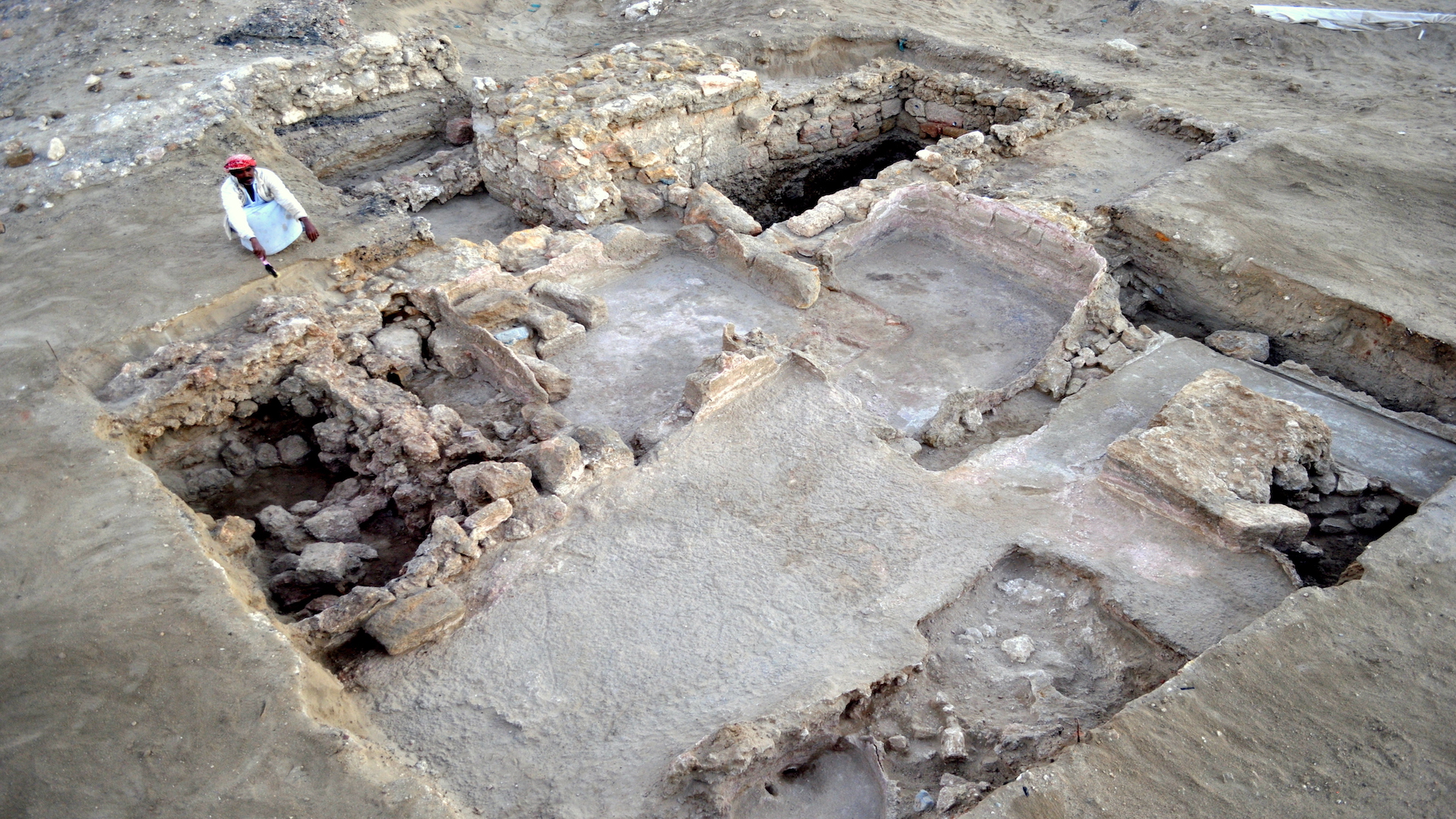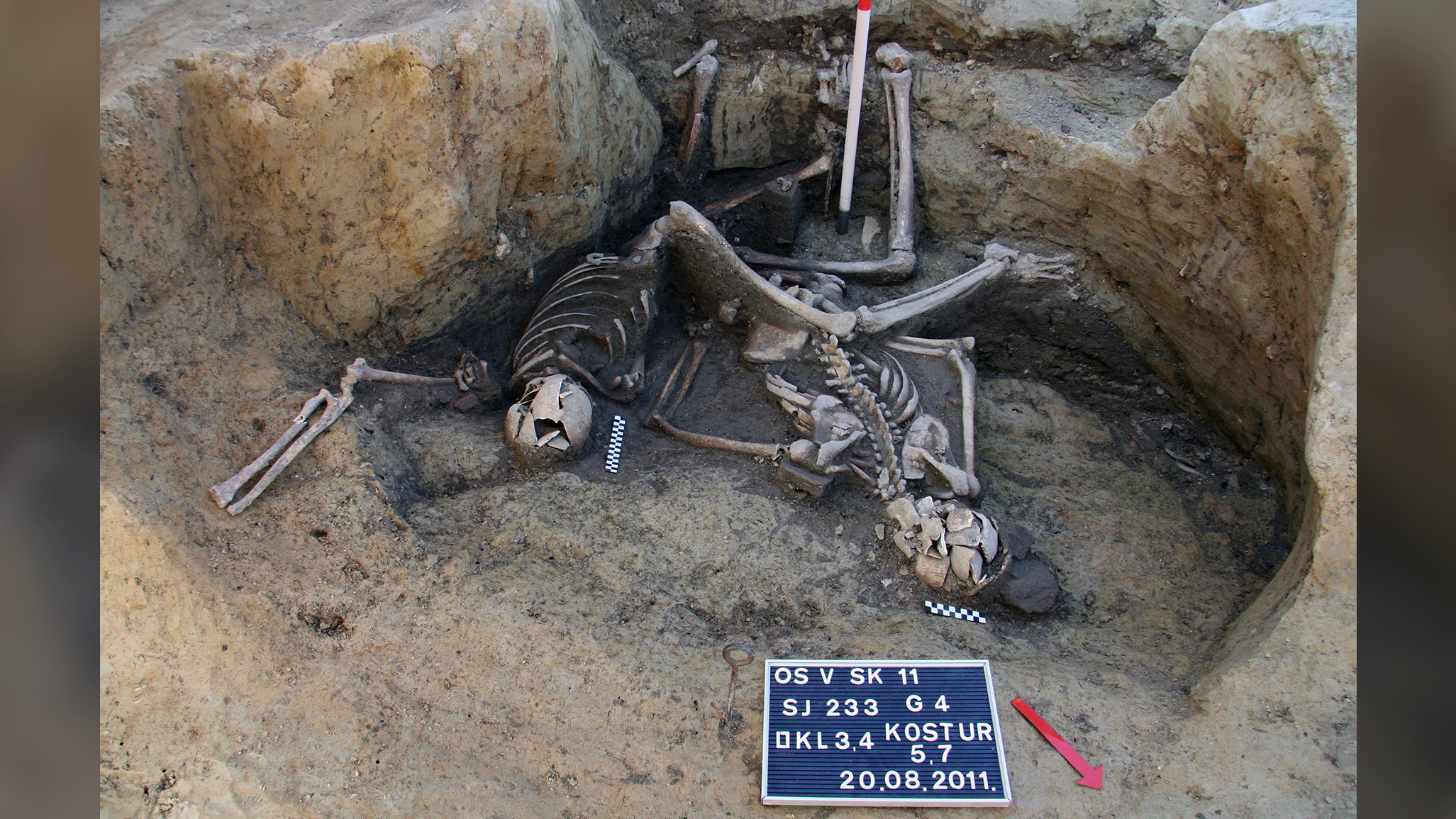Greek bathhouse found in ancient Egyptian town by Red Sea
The ruins of a 2,200-year-old bathhouse dating to the second half of the third century B.C. have been discovered at Berenike, a town in Egypt by the Red Sea.
The ruins of a 2,200-year-old bathhouse dating to the second half of the third century B.C. have been discovered at Berenike, a town in Egypt by the Red Sea.
The giant bathhouse has two tholoi (circular structures) with 14 bathtubs in each that would have had cold or lukewarm water, as well as a separate room for hot baths. The water entered the building from two large water reservoirs fed by a single well. It's possible that a gymnasium may have been built to the west of it, Marek Woźniak, an assistant professor at the Polish Academy of Science's Institute of Mediterranean and Oriental Cultures, told Live Science in an email.
Woźniak is in charge of researching remains from Berenike that date to ancient Egypt's Hellenistic period (circa 323 B.C. to 30 B.C.), the time between the death of Alexander the Great and the death of Cleopatra VII. During this time, Greek culture, including architectural styles, flourished in the Middle East.
Related: Ancient 'tomb' unearthed in Guatemala turns out to be Maya steam bath
At the time that the bathhouse's waters were flowing, Berenike had a sizable military presence and was a hub for imported goods and war elephants from East Africa, said Woźniak. This bathhouse likely would have been used by people involved in these operations, such as ship crews, said Woźniak. The heavy military involvement means that most of the people living at Berenike at this time were probably men, Woźniak said.
This bathhouse likely would have been used as a place to relax by the military personnel posted there. Bathhouses in Hellenistic times often "served as places to meet and relax after work or sporting exercise, hence they were often combined with gymnasia [gyms]" Wozniak said.
No writing was found at the bathhouse, but archaeologists unearthed coins and pieces of pottery, finds which helped archaeologists date the bathhouse's active years, Woźniak said.
Get the world’s most fascinating discoveries delivered straight to your inbox.
The excavations at Berenike are led by Mariusz Gwiazda, an assistant professor of archaeology at the Institute of Mediterranean and Oriental Cultures, and Steven Sidebotham, a history professor at the University of Delaware who specializes in the ancient global economy.
The team has made many finds at Berenike over the past few years, including a 2,300 year-old fort and a 1,700 year-old falcon shrine with a stele inscribed with a cryptic message. Excavations and analysis of remains at Berenike are ongoing.

Owen Jarus is a regular contributor to Live Science who writes about archaeology and humans' past. He has also written for The Independent (UK), The Canadian Press (CP) and The Associated Press (AP), among others. Owen has a bachelor of arts degree from the University of Toronto and a journalism degree from Ryerson University.


